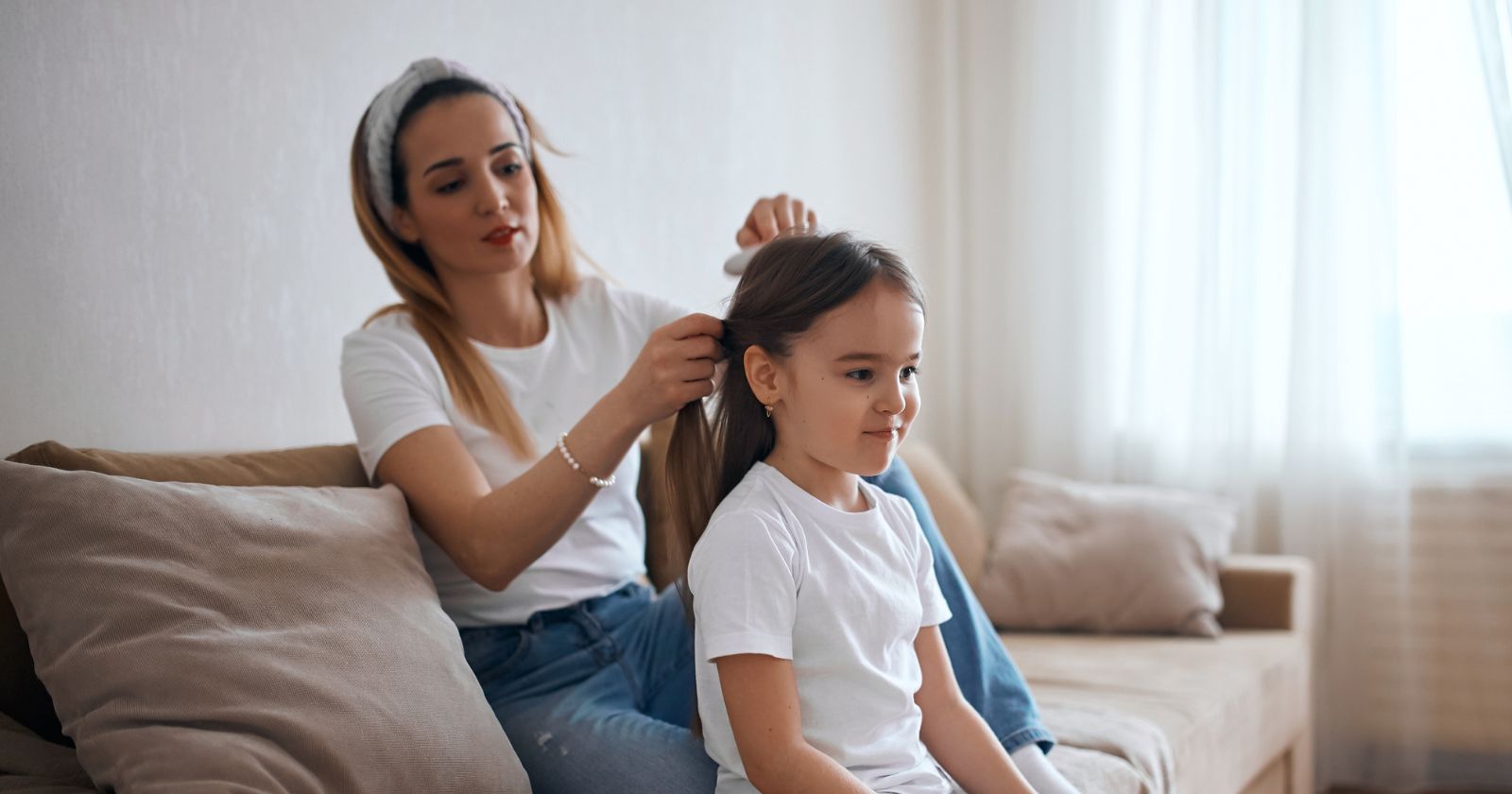Getting rid of head lice from your hair is hard enough – but what happens when they end up on your furniture as well? Using lice treatment on hair is not enough – you need to treat your house.
To kill lice on furniture you will need to wash your furnishings and covers at home, send them to be dry cleaned, or use a specialist lice spray. If you cannot disinfect your furniture, you can isolate the infected pieces for a week to ensure the lice and nits are dead.
Lice and nits can get anywhere you put your head – on clothes, bed linens, your couch, pillow cases, blankets, throws, mattresses, sofa cushions, hair accessories, and almost any other place you can think of. Getting rid of a lice infestation requires you to treat these items as well as you or your child’s hair.
How Long Can Head Lice Live on Furniture or Furnishings?
Head lice can survive on furniture and furnishings for up to two days after which they cannot survive. The lice eggs (nits), can survive up to a week.
Without taking action, the lice can easily get back on you or your child’s head after treatment. Thankfully, after two days the lice survive without the food (your blood!) and warmth a human head provides. Similarly, the nits can only survive up to a week and won’t hatch without the warmth of a head. This means you can wait them out by isolating furniture and furnishings you think might be infected – but do you really want to stay off your furniture for a week?
Alternatively, follow the steps below:
6 Steps to Kill Lice on Furniture
Ready to get rid of lice and nits from your home? Let’s get started:
Step 1: Remove Infested Items From Use
Immediately remove and stop using any bed linen, clothing, or furnishings that may have come into contact with a person’s head. This might include pillows, duvets, quilts, throws, blankets, and cushions, as well as scarves, hats, coats, covers for car seats, towels, and even stuffed toys.
Step 2: Wash and/or Dry Infested Items
According to the CDC, exposure to hot water with a temperature above 53.5°C (128.3°F) for 5 minutes or more. The high heat will get rid of the lice and their eggs.
Of course, for furniture, this is only good for covers and throws that can be removed, for the rest of the furniture you’ll need to go to the next step:
Step 3: Vacuum Thoroughly
Unless all your coverings can be removed, you won’t be able to easily wash or dry your furniture at high temperatures. For these items, start by vacuuming them. Done properly, this should remove most head lice and nits (eggs), but you must pay special attention to cracks and crevasses where they can easily hide.
Step 4: Use a Lint Roller
After vacuuming, use a lint roller thoroughly on the furniture. This should pick up any remaining head lice and stop the spread. Make sure you dispose of the roller carefully afterwards to prevent recontamination. Together, vacuuming and a good go with a lint roller should be enough in most situations.
Step 5: Spray Your Furniture to Remove Lice
Commercial head lice sprays are easily and cheaply obtainable at Amazon. However, lice are increasingly becoming resistant to these types of products and so-called “super lice” may survive treatment. For this reason, we recommend you use a spray as part of your campaign to get rid of lice, but not as your only strategy.
The best product we’ve found for this is the Nix Lice & Bed Bug Killing Spray for Home, Bedding & Furniture. It’s odorless, shouldn’t stain water-safe fabrics (check your label), and should eliminate both lice and nits.
Warning: Always check and follow a product’s safety instructions. Always test on a small area of furniture first to check it does not affect color.
Step 6: Isolate
If the above steps are not possible, isolate the infested items. Ideally, cover it with a plastic bag so that lice cannot possibly get off it, then leave for a week. If possible, seal the plastic bag (they can crawl). This should get rid of lice.
How long can lice live on a couch?
Head lice can survive on a couch for up to two days. Their eggs (nits), can survive up to a week.
How long do lice live on a mattress?
Head lice can survive on a mattress for up to two days. Their eggs (nits), can survive up to a week.
How long can live live on carpet?
Head lice can survive on carpets for up to two days. Their eggs (nits), can survive up to a week.
How do you treat a mattress for lice?
Vacuum the mattress thoroughly to remove most of the head lice and eggs, paying particular attention to the cracks. Then use a lint roller. Spray or isolate if you are concerned this isn’t enough.
How do you kill lice on bedding?
Kill head lice on bedding by washing using hot water and/or using a dryer. The temperature must be above 53.5°C (128.3°F) for 5 minutes or more – this high heat will kill all lice and eggs.
Does washing clothes kill lice?
Only if the temperature remains above 53.5°C (128.3°F) for 5 minutes or more. Water alone is not guaranteed to kill head lice.
Does Lysol kill head lice?
Lysol does not kill lice. We recommend you use the steps and products outlined above instead.
Does bleach kill head lice?
Yes, strong bleach will kill lice. However, the strength necessary to kill lice is not suitable for use on your or a child’s head (may cause chemical burns) and is likely to damage your furniture or furnishings. Hair bleach, which is weaker, is unlikely to kill lice, and should not be used as a lice treatment.


